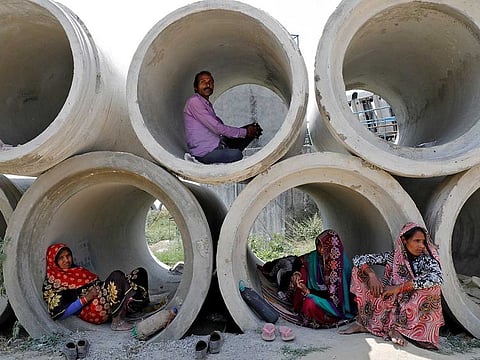COVID-19: World faces another pandemic
In several countries starvation, illiteracy and poverty loom on the heels of coronavirus

Another pandemic is looming on the heels of the coronavirus: a pandemic of starvation, illiteracy and poverty.
“We are not only facing a global health pandemic but also a global humanitarian catastrophe,” David Beasley, a former South Carolina governor who is executive director of the United Nations World Food Program, warned the Security Council this week. “We could be looking at famine in about three dozen countries.”
The world, he said, faces its most serious humanitarian crisis since World War II.
Polio eradication campaigns are being suspended. The same is true of vitamin A distribution, which saves children’s lives and prevents blindness. School feeding programs have often been shut down along with schools
Developing countries have enormous vulnerabilities, such as overcrowded slums and health systems in which doctors are scarce and ventilators almost nonexistent. Ten countries in Africa have no ventilators at all.
Ability to wash hands
We instruct people to protect themselves from the coronavirus by washing their hands with soap and water, but more people worldwide have a cell phone (5 billion) than have the ability to wash their hands at home (4.8 billion).
Almost 4 out of 10 people worldwide, a total of 3 billion people, don’t have hand-washing options at home, according to UN estimates.
For doctors and nurses in poor countries, the challenge is not just a lack of face masks: More than one-third of health centers in impoverished countries don’t have hand-washing facilities, the UN reports.
Horrifying images from Guayaquil, Ecuador, of bodies left to rot in the street underscore the risks in the developing world.
Yet there are also countervailing factors. The virus is particularly likely to kill older people, especially those suffering from pre-existing medical conditions, and that’s where developing countries have a huge advantage.
Only 2% of people in Angola, Burkina Faso or Kenya are over age 65. In Haiti, the figure is 5%; in India, 6%. In contrast, 23% in Italy and 16% in the United States are over 65, according to the World Bank.
Likewise, 70% of Americans are overweight or obese, a significant risk factor for the coronavirus. That is a far greater share of the population than in the developing world.
How COVID-19 impacts the poor
Put that all together and how badly will COVID-19 strike poor countries?
“We just don’t know,” Esther Duflo, an MIT economist who won the Nobel in economic science last year, told me.
Dr. David Nabarro, a veteran UN global health expert, put it this way: “We can only have hypotheses, and the hypotheses are vaguely hopeful.”
I share that view: As a purely medical matter, I’m not as pessimistic about the impact on the developing world as some other commentators are. But I greatly fear that the indirect impact will be devastating.
Polio eradication campaigns are being suspended. The same is true of vitamin A distribution, which saves children’s lives and prevents blindness. School feeding programs have often been shut down along with schools.
In Bangladesh, where the economy has been hard hit by the coronavirus, a survey by a respected aid group, Brac, found that household incomes have declined an average of 75%.
Factory workers saw incomes drop by 79%, drivers by 80%, city day labourers by 82%, maids by 68% and rickshaw pullers by 78%. Four in 10 respondents had three days’ worth of food at home or less.
Schools are closed in many countries, and some students, especially girls, will probably never return to their studies.
When families are desperately short of money and food, they are less likely to pay school fees.
Absense of livelihood
Amartya Sen, a development economist, has noted that the presence of disease kills, and so does the absence of livelihood. People in poor countries have seen their livelihoods shattered by lockdowns, by collapse of tourism and by an end to remittances coming from relatives abroad.
“COVID-19 is potentially catastrophic for millions who are already hanging by a thread,” said Arif Husain, chief economist of the World Food Program. “It is a hammer blow for millions more who can only eat if they earn a wage.”
The World Food Program warns that the pandemic could almost double the number of people suffering from acute hunger.
We know that when infants and toddlers are malnourished, their brains don’t grow well, and they may suffer lifelong cognitive deficits. Decades from now, they and their countries will be held back if we cannot address the hunger crisis of 2020.
At a time of great pain and economic stress in the rich world, this will be difficult. Yet aid is essential, in the form of debt relief as well as direct assistance.
“Food is already scarce,” Kennedy Odede, CEO of Shofco, a home-grown Kenyan anti-poverty group, told me. “Many have lost their jobs — and our communities survive by hand-to-mouth. There is no safety net or system. Yesterday, a childhood friend told me, ‘I’d rather die from COVID than from hunger.’”
NYT
Nicholas Kristof is an American journalist, author and a winner of two Pulitzer Prizes.
Sign up for the Daily Briefing
Get the latest news and updates straight to your inbox






